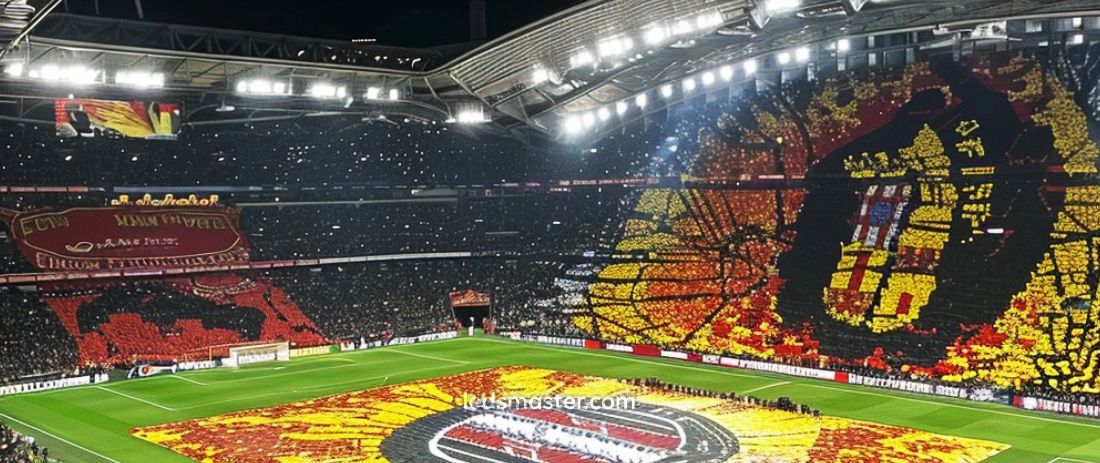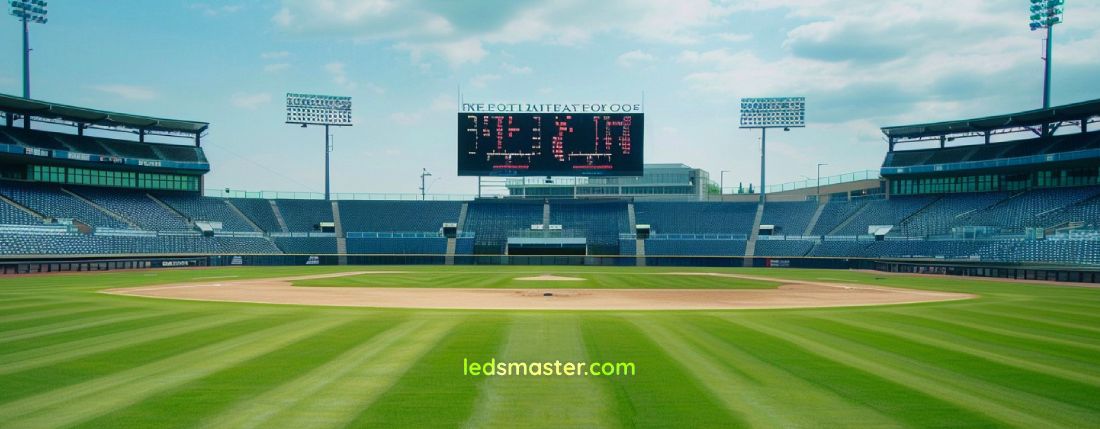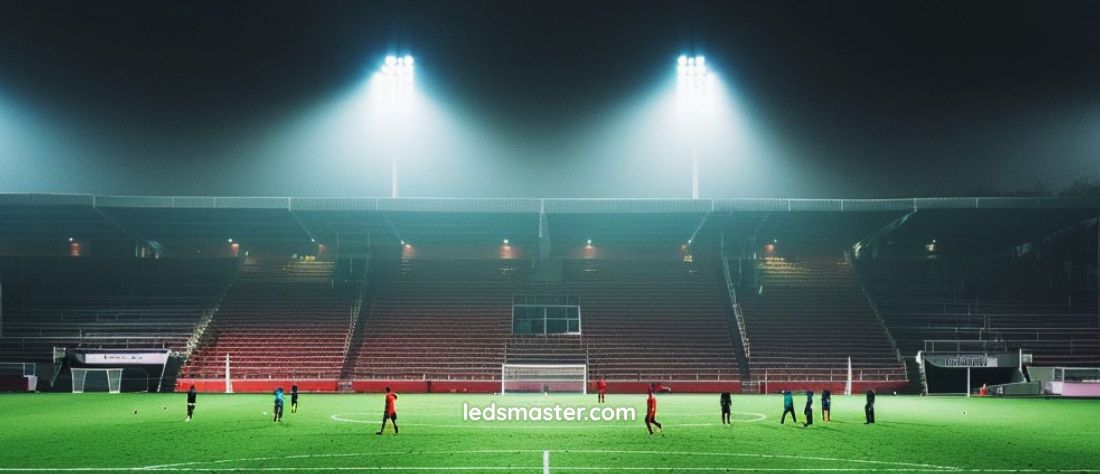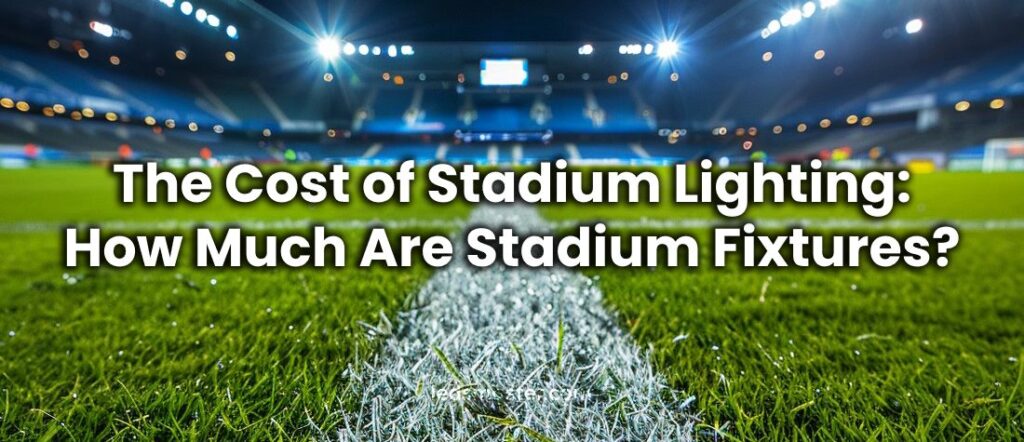Lighting is a critical component of stadium infrastructure, significantly impacting the experience for both players and spectators. When considering the purchase of stadium lighting, it’s essential to understand the costs involved. Generally, 500 to 1500W LED lights serve as the primary light source for stadiums. The price per watt of these LED lights typically ranges from $0.50 to $2.00. For instance, a 1000W LED floodlight may cost between $500 and $2000, influenced by factors such as the brand and manufacturing origin.
It’s advisable to avoid extremely low-priced options (e.g., $0.10 to $0.30 per watt) as they may not meet the required quality standards, particularly since the cost of components like the power supply alone often exceeds these amounts.
For high school stadiums, the lighting cost ranges from $15,000 to $50,000, equating to approximately 10,000 to 60,000 watts of LED lights. In contrast, lighting for FIFA or Premier League stadiums can range from $120,000 to $280,000, depending on specific lighting requirements, pole height, and additional factors. For a precise estimate tailored to your stadium’s needs, contact our engineers for a free lighting quote.
Table of Contents
ToggleEstimating the Cost of Stadium Lighting
Accurately estimating the cost of stadium lighting involves a detailed process that begins with determining the required wattage and the number of LED lights. This is typically done using photovoltaic simulation software, which plays a crucial role in designing an optimal lighting layout for the stadium. This software allows engineers to create a virtual model of the stadium and simulate various lighting scenarios, taking into account factors such as pole height, light angles, and field dimensions. It helps in identifying the most efficient arrangement of lights to ensure adequate illumination levels, uniform light distribution, and minimal energy consumption.
For instance, when lighting a high school soccer field, the process may involve using four poles with heights ranging from 18 to 25 meters. Based on the simulation results and the desired lighting standards, it might be determined that approximately 16 to 20 pieces of 1000W LED lights are needed to achieve a lighting intensity of 250 to 350 lux. Lux is a measure of the amount of light hitting a surface, and achieving this level ensures good visibility for both players and spectators.
The specific requirements for high school fields are generally less stringent than those for professional venues like FIFA-standard fields, where higher lux levels and more uniform lighting are necessary. As a result, the overall lighting costs for high school stadiums are typically lower. The photovoltaic simulation helps in fine-tuning the design to meet these requirements cost-effectively.
For the high school scenario, with a total of 16 lights, the design would distribute these evenly across the four poles, with each pole supporting four fixtures. This balanced distribution ensures that the field is evenly lit, avoiding dark spots or uneven lighting, which can affect gameplay and spectator experience. The simulation also assists in calculating the total wattage needed and estimating energy consumption, helping to budget for both initial installation costs and long-term operating expenses. By accurately predicting the lighting needs, photovoltaic simulation software ensures that the stadium lighting system is both efficient and cost-effective, tailored to the specific requirements of the venue.

Installation Costs for Stadium Lighting
The installation cost for stadium lighting can vary widely, influenced by a range of factors that determine the complexity and scope of the project. For general installations, which might include high school fields or small community stadiums, the costs typically range from $25,000 to $75,000. These figures account for the basic requirements such as mounting the lights on poles, wiring, and initial setup. However, for larger and more sophisticated installations, such as those in professional soccer stadiums, the costs can escalate significantly, ranging from $50,000 to $240,000. This broader range reflects the added complexities and higher standards required for professional venues.
Several key factors contribute to these variations in installation costs. First, the stadium’s roof structure plays a significant role. In some stadiums, lights may need to be installed on or integrated into complex roof systems, which can require specialized mounting equipment and additional engineering work. The design and condition of the roof can influence how easily lighting systems can be installed and whether additional structural modifications are needed to support the lights.
Secondly, the number and weight of the lights themselves impact installation costs. Larger stadiums often require more lights to ensure adequate coverage and uniform illumination. Heavy lights may need more robust mounting systems and potentially stronger poles or supports, which can add to the installation expense. The type of lighting used also matters; for example, sophisticated LED systems with advanced features such as adjustable angles or smart controls may involve more complex installation procedures compared to simpler, fixed-position lights.
Furthermore, the cost can be affected by the location and accessibility of the stadium. Urban stadiums may have higher costs due to logistical challenges such as limited space for equipment and increased labor costs, while remote stadiums might incur additional expenses for transporting materials and labor to the site.
To manage and potentially reduce installation costs, reusing existing stadium light poles can be a practical approach. If the existing poles are in good condition, they can be repurposed, which can save on the expense of purchasing and installing new poles. This not only reduces material costs but also minimizes the labor required for pole installation and extensive cable reconnections. However, this approach depends on a thorough assessment of the poles’ structural integrity and their suitability for supporting new lighting fixtures.
A critical step in this process is conducting detailed photometric studies. These studies are essential for determining the correct lux levels—measuring the intensity of light hitting the field surface—and ensuring uniform light distribution across the stadium. Photometric analysis involves simulating different lighting configurations to identify the most efficient layout and to avoid issues such as shadowing or glare, which can affect both player performance and spectator experience. By integrating photometric findings into the design, engineers can optimize the lighting system to meet specific needs while managing costs effectively.
For those seeking detailed information and a customized quote, consulting with experienced lighting engineers can provide valuable insights into the specific requirements and cost factors for their stadium lighting project. Engineers can offer tailored solutions that address unique challenges and leverage existing infrastructure to create a cost-efficient, high-performance lighting system.

Reinforcing Stadium Light Poles: Costs and Considerations
Reinforcement of stadium light poles may become necessary when existing poles are required to support additional or heavier lighting fixtures. This is a common consideration when upgrading stadium lighting systems or accommodating new lighting configurations that exceed the original design specifications of the poles. Structural reinforcement is crucial in such cases to ensure safety and stability, preventing potential hazards such as pole cracking, structural failure, or fixtures falling, which can pose serious risks during events.
Consider a scenario where each lighting fixture weighs approximately 15 kg. If the planned lighting setup requires 40 fixtures, the total load per pole would amount to 600 kg. This significant weight necessitates a thorough evaluation of the pole’s structural capacity to support the added load. If the poles were initially designed for fewer or lighter fixtures, they might not withstand the increased weight without modifications.
The reinforcement process involves several steps to enhance the pole’s structural integrity. Initially, an engineering assessment is conducted to evaluate the current condition of the poles, including their material strength, foundation stability, and overall design. Based on this assessment, engineers determine the specific reinforcement measures required. These measures can include adding additional support structures, strengthening the base or foundation, or incorporating cross-bracing to distribute the load more evenly.
For instance, one common reinforcement method involves wrapping the poles with carbon fiber or other high-strength materials to increase their load-bearing capacity without significantly adding to the pole’s weight. Alternatively, steel braces or additional guy wires may be installed to provide extra support and stability. Each of these approaches aims to enhance the pole’s ability to handle the new lighting setup without compromising its structural integrity.
The costs associated with retrofitting and reinforcing stadium light poles can vary widely depending on several factors, including the type of poles, the number of lights to be added, and the specific reinforcement techniques used. Generally, retrofitting costs can range from $5,000 to $30,000 per pole. This range reflects the complexity of the reinforcement work and the materials involved. More extensive reinforcement involving sophisticated engineering solutions or high-strength materials may fall at the higher end of this range.
Opting for lightweight LED lights can significantly reduce the need for extensive reinforcement. LED lights are not only more energy-efficient but also typically lighter than traditional lighting options such as metal halide or mercury vapor lamps. This weight reduction can decrease the load on the poles, thereby minimizing the reinforcement required. For example, if traditional fixtures are replaced with LEDs that provide equivalent illumination with fewer units, the overall weight on the poles can be significantly reduced, leading to cost savings in both lighting fixtures and structural reinforcement.
Replacing traditional lighting with LEDs also offers additional benefits beyond weight considerations. LEDs have a longer lifespan, consume less power, and provide more consistent lighting, making them an attractive option for modern stadiums. The reduction in the number of required fixtures not only lowers the weight but also simplifies maintenance and reduces long-term operational costs.

Operating Costs of Stadium Lights
Understanding the operating costs of stadium lights is crucial for effective long-term budgeting and financial planning. These costs encompass not only the direct expenses related to energy consumption but also the indirect benefits associated with modern, energy-efficient lighting technologies. To estimate the operating costs, it’s essential to consider key factors such as the electricity rate, the total wattage of the lights, and the typical hours of usage.
Let’s break down the calculation for a clearer picture. For example, assume an electricity rate of $0.15 per kilowatt-hour (kWh) in the U.S. Running 10,000 watts (10 kW) of stadium lighting for one hour at this rate would cost approximately $1.50. This calculation is straightforward.
10,000 W × $0.15 / 1,000 per hour = $1.50 per hour
Expanding this to a typical high school stadium using 50,000 watts (50 kW) of LED lighting, the cost can be calculated similarly. For each hour of use, the stadium would incur $7.50 ($0.15 x 50 kW). If the stadium lights are operated for 8 hours a day, the daily cost would be $6.00.
50,000 W × $0.15 / 1,000 per hour × 8 hours = $6.00 per day
Over the course of a month, assuming 20 days of use, this cost amounts to $120.
$6.00 per day × 20 days = $120 per month
Annually, this translates to approximately $1,440.
$120 per month × 12 months = $1,440 per year.
In contrast, consider a scenario where traditional metal halide lights with a total wattage of 125,000 watts are used instead of LEDs. These older lighting systems typically consume more power to achieve similar illumination levels. At the same electricity rate, running 125,000 watts of metal halide lights for one hour would cost $18.75.
125,000 W × $0.15 / 1,000 per hour = $18.75 per hour
For an 8-hour day, the cost would be $150.
125,000 W × $0.15 / 1,000 per hour × 8 hours = $150 per day
Over a month of 20 days, the total would be $3,000.
$150 per day × 20 days= $3,000 per month
Annually, the cost would reach $36,000.
$3,000 per month × 12 months = $36,000 per year
Switching to 50,000 watts of energy-efficient LEDs from 125,000 watts of metal halide lights thus yields substantial savings. LEDs not only reduce the overall wattage required but also offer better illumination and longer lifespan, leading to fewer replacements and lower maintenance costs over time. This switch reduces the annual electricity cost from $36,000 for metal halides to $1,440 for LEDs, resulting in a dramatic cost reduction of $34,560 per year.
Moreover, LED lights contribute additional operational efficiencies, such as reduced heat output, which can lower the cooling costs in indoor stadiums. Their instant-on capability eliminates the warm-up time required by traditional lighting systems, ensuring that lights can be used only when needed without extended pre-operation periods.
Understanding these cost dynamics highlights the financial advantages of modernizing stadium lighting systems with LED technology. These savings can be redirected towards other stadium improvements, maintenance, or community projects, making LED lighting an economically and environmentally prudent choice for modern stadiums.
For stadium managers and planners, integrating these detailed cost calculations into their budget planning provides a clear picture of both immediate and long-term financial benefits, supporting informed decisions on lighting investments.
Maintenance Costs of Stadium Lights
The maintenance costs for LED stadium lights are minimal due to their remarkable longevity and durability. Modern LED lights typically have a lifespan ranging from 120,000 to 150,000 hours. To put this in perspective, if the lights are operated for an average of 8 hours daily, this translates to approximately 50 years of use. Such an extended operational life significantly reduces the frequency of replacements and associated maintenance activities, making LEDs a highly cost-effective solution over the long term.
LED technology’s robustness contributes to its minimal maintenance needs. LEDs are solid-state lighting devices, meaning they have no fragile components like filaments or gas-filled tubes that are prone to breakage or failure. This inherent durability allows them to withstand various environmental conditions, including vibrations and temperature fluctuations, which are common in outdoor stadium settings. As a result, in the absence of external physical damage—such as from extreme weather, vandalism, or accidental impacts—LED lights require little to no maintenance over decades of service.
Routine maintenance for LED systems typically involves occasional cleaning to remove dust and debris that might accumulate on the fixtures, ensuring optimal light output. However, this is a relatively simple and infrequent task compared to the extensive and regular maintenance required by traditional lighting systems.
In contrast, traditional lighting options such as halogen or gas discharge lamps, including metal halide and mercury vapor lamps, have a much shorter lifespan, ranging from 15,000 to 30,000 hours. This limited lifespan means that these lamps need to be replaced more frequently, typically every 2 to 4 years, depending on their usage patterns and the specific type of lamp. Each replacement cycle involves not only the cost of new lamps but also substantial labor costs associated with the installation, especially for high-mounted stadium lights.
The labor costs for replacing traditional high-intensity discharge (HID) lamps can be significant, often ranging from $300 to $1,000 per hour. This high cost reflects the complexities involved in accessing and replacing lights mounted on tall poles or roof structures. It includes expenses for specialized equipment like lifts or cranes, safety measures for working at heights, and the skilled labor required for the replacement process. These costs can add up quickly, especially for large stadiums with numerous lighting fixtures, making traditional lighting systems expensive to maintain over time.
The latest advancements in LED technology have further enhanced their lifespan and reliability, with some LED systems now offering operational lifespans that extend up to 1000% longer than traditional lamps. This dramatic increase in longevity means that LEDs can remain functional and efficient for decades without the need for frequent replacements. Consequently, the reduction in maintenance and replacement activities translates into significant cost savings, as it eliminates the recurring expenses associated with traditional lighting upkeep.
Beyond the financial benefits, the reduced need for maintenance also offers operational advantages. Stadiums can minimize downtime and disruptions caused by lighting maintenance, ensuring consistent lighting performance for events and enhancing overall operational efficiency. This is particularly important for venues hosting frequent events or high-profile matches, where reliable and uninterrupted lighting is critical for both performance and safety.
Conclusion
Investing in modern LED stadium lighting offers numerous advantages, including significant reductions in maintenance costs, extended lifespan, and substantial savings on operational expenses. Unlike traditional lighting systems that require frequent replacements and incur high maintenance costs, LEDs provide durable, energy-efficient solutions that ensure long-term financial benefits and reliable performance. To optimize your stadium lighting and achieve these savings, we encourage you to reach out for a free lighting design consultation and cost estimation. Our team is ready to help you find the best lighting solutions tailored to your needs, ensuring that you save both money and effort. Contact us today to illuminate your stadium more efficiently and cost-effectively.

